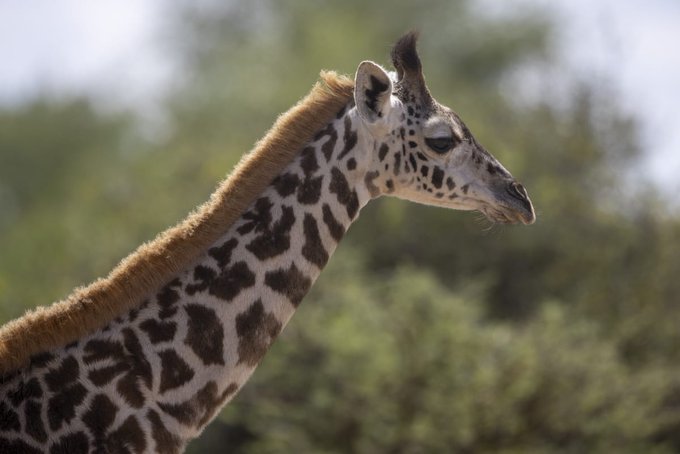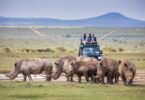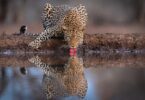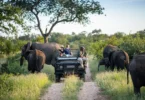A special team of veterinarians has been dispatched to Wajir’s Saburi Conservancy to probe the cause of death of 10 giraffes.
Tourism Cabinet Secretary Najib Balala on Tuesday asked veterinarians from Kenya Wildlife Service (KWS) Meru Mobile Vet Unit to investigate the cases in Wajir.
“I have directed a veterinary team from @kwskenya Meru Mobile Vet Unit, to investigate the cause of the giraffe mortalities, in Wajir,” he tweeted.
The mobile vet team is expected to track down the giraffes in Saburi and carry out a medical examination into what is ailing them
“The team will work with the local @kwskenya team to locate the giraffes and conduct medical examinations, to identify the cause of the deaths and ways to reduce risk of death in other giraffes and wildlife species,” Balala added.
Mohamed Sharmarke, Sabuli Conservancy chairman said that giraffes in the area have been suffering from a rare skin disease.
He said that the disease has affected their feeding habits because it has infected their mouth.
According to Sharmarke, the disease gets worse during the dry season.
Also read: Top Destinations In Africa Of All Time
“The disease seems to worsen during the dry season when the forage declines. We have recorded more than 10 deaths at the conservancy since last year. More might be affected outside our conservancy,” the Saburi Conservancy chairman said.
Wajir County KWS Warden Kirimi Mbaka seconded Sharmarke saying that a prolonged dry spell has caused the reported deaths.
He said that though the situation cannot be classified as dire, they are carrying out a vaccination exercise.
Mbaka insisted that there are only two giraffes that have died and not 10 as CS Balala had pointed out.
“We don’t have a serious situation at the conservancy but we shall be carrying out a screening for other giraffes to identify those still affected for treatment. Veterinary officers are still on their way and once they arrive, treatment of any other affected giraffe will commence,” he added.
There are 40 giraffes in Sabuli Conservancy which is managed by a community-based organization.
The conservancy has been through a rough patch after it became a hot spot for poachers in 2020.
It is believed that poachers turned to wild animals after markets closed due to the COVID-19 pandemic. Left with no other means to obtain food, some people turned to poaching and game hunting.
A report by investigative agencies found out that there was a high demand for game meat in the neighbouring Daadab Refugee Camp in Garissa which spurred game hunting.
In early March, a lion in the conservancy was found dead in what KWS said was as a result of poisoning – usually happens as an aftermath of human-wildlife conflict which escalates during the dry season.
Generally, giraffes, especially the reticulated giraffe has been under threat by poachers who are driven by a growing market of giraffe meat believed to increase libido in men.
These cultural myths have led to the killing of several giraffes in the recent past.
A year ago, Kenya’s last and rare white female giraffe and its calf were killed by poachers at the Ishaqbini Hirola Conservancy in Garissa.
Also read: What You Should Know Out Soysambu Conservancy In Nakuru
The two giraffes were then slaughtered and some of their organs and meat take away.
Only their carcasses were found weeks later by a ranger patrolling the conservancy.
The white female giraffe hit global headlines in 2017 over its unique skin which catapulted Ishaqbini Hirola Conservancy to fame in the global world of tourism.
The white skin is a result of a condition known as leucism – similar to albinism in humans.
With the death of the white mother giraffe and her calf, there is only one “lone bull” surviving.








